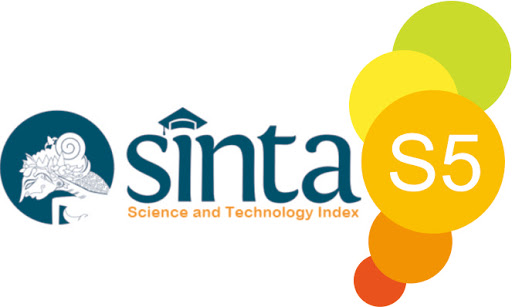PENGARUH KONSENTRASI ETANOL TERHADAP KADAR FLAVONOID, FENOLIK DAN AKTIVITAS ANTIOKSIDAN DAUN JARUM TUJUH BILAH (Pereskia bleo (Kunth) D.C)
Kata Kunci:
Daun Jarum Tujuh Bilah, Antioksidan, Flavonoid, FenolikAbstrak
Daun Jarum Tujuh Bilah (Pereskia bleo (Kunth) D.C) merupakan salah satu tanaman obat yang mengandung senyawa bioaktif seperti flavonoid dan fenolik yang memiliki potensi sebagai antioksidan. Penelitian ini bertujuan untuk mengetahui pengaruh variasi konsentrasi etanol sebagai pelarut ekstraksi terhadap kadar flavonoid, fenolik, dan aktivitas antioksidan daun jarum tujuh bilah untuk mendukung pemanfaatannya dalam bidang farmasi dan kesehatan. Metode penelitian menggunakan ekstraksi maserasi dengan pelarut etanol pada berbagai konsentrasi. Pengukuran kadar flavonoid dan fenolik dilakukan secara kuantitatif menggunakan spektrofotometri UV-Vis, sedangkan aktivitas antioksidan dievaluasi dengan metode DPPH (2,2-difenil-1-pikrilhidrazil). Data yang diperoleh dianalisis untuk melihat pengaruh perbedaan konsentrasi etanol terhadap efektivitas ekstraksi kandungan bioaktif. Hasil penelitian menunjukkan kadar flavonoid total tertinggi pada ekstrak etanol 70% sebesar 5,91 mgQE/g, dibandingkan dengan etanol 50% (5,74 mgQE/g) dan etanol 96% (5,87 mgQE/g). Kandungan fenolik total tertinggi juga diperoleh pada ekstrak etanol 70% sebesar 69,8 mgGAE/g, dibandingkan etanol 50% (1,94 mgGAE/g) dan etanol 96% (4,96 mgGAE/g). Uji aktivitas antioksidan menunjukkan nilai IC₅₀ ekstrak etanol 70% sebesar 36,519 ppm, etanol 50% sebesar 37,438 ppm, dan etanol 96% sebesar 40,860 ppm; semua tergolong antioksidan sangat kuat, meskipun masih lebih rendah dibandingkan kuersetin sebagai kontrol positif (IC₅₀ = 3,39 ppm). Kesimpulan penelitian ini adalah pelarut etanol 70% paling efektif mengekstraksi flavonoid dan fenolik, serta menghasilkan aktivitas antioksidan terbaik dibandingkan pelarut lain.
Seven-blade needle leaves (Pereskia bleo (Kunth) D.C.) are a medicinal plant containing bioactive compounds such as flavonoids and phenolics, which have potential as antioxidants. This study aims to determine the effect of varying ethanol concentration as an extraction solvent on the flavonoid, phenolic, and antioxidant activity levels of Seven-blade Needle leaves to support their use in the pharmaceutical and health sectors. The research method used maceration extraction with ethanol at various concentrations. Flavonoid and phenolic content were measured quantitatively using UV-Vis spectrophotometry, while antioxidant activity was evaluated using the DPPH (2,2-diphenyl-1-picrylhydrazyl) method. The data obtained were analyzed to determine the effect of different ethanol concentrations on the effectiveness of bioactive compound extraction. The results showed that the highest total flavonoid content was found in the 70% ethanol extract (5.91 mg QE/g) compared with 50% ethanol (5.74 mg QE/g) and 96% ethanol (5.87 mg QE/g). The highest total phenolic content was also found in the 70% ethanol extract (69.8 mg GAE/g), compared with 50% ethanol (1.94 mg GAE/g) and 96% ethanol (4.96 mg GAE/g). Antioxidant activity tests showed IC₅₀ values of 36.519 ppm for the 70% ethanol extract, 37.438 ppm for the 50% ethanol extract, and 40.860 ppm for the 96% ethanol extract; all were classified as very strong antioxidants but weaker than quercetin as the positive control (IC₅₀ = 3.39 ppm). In conclusion, 70% ethanol was the most effective solvent for extracting flavonoids and phenolics and produced the best antioxidant activity among the tested ethanol concentrations.





